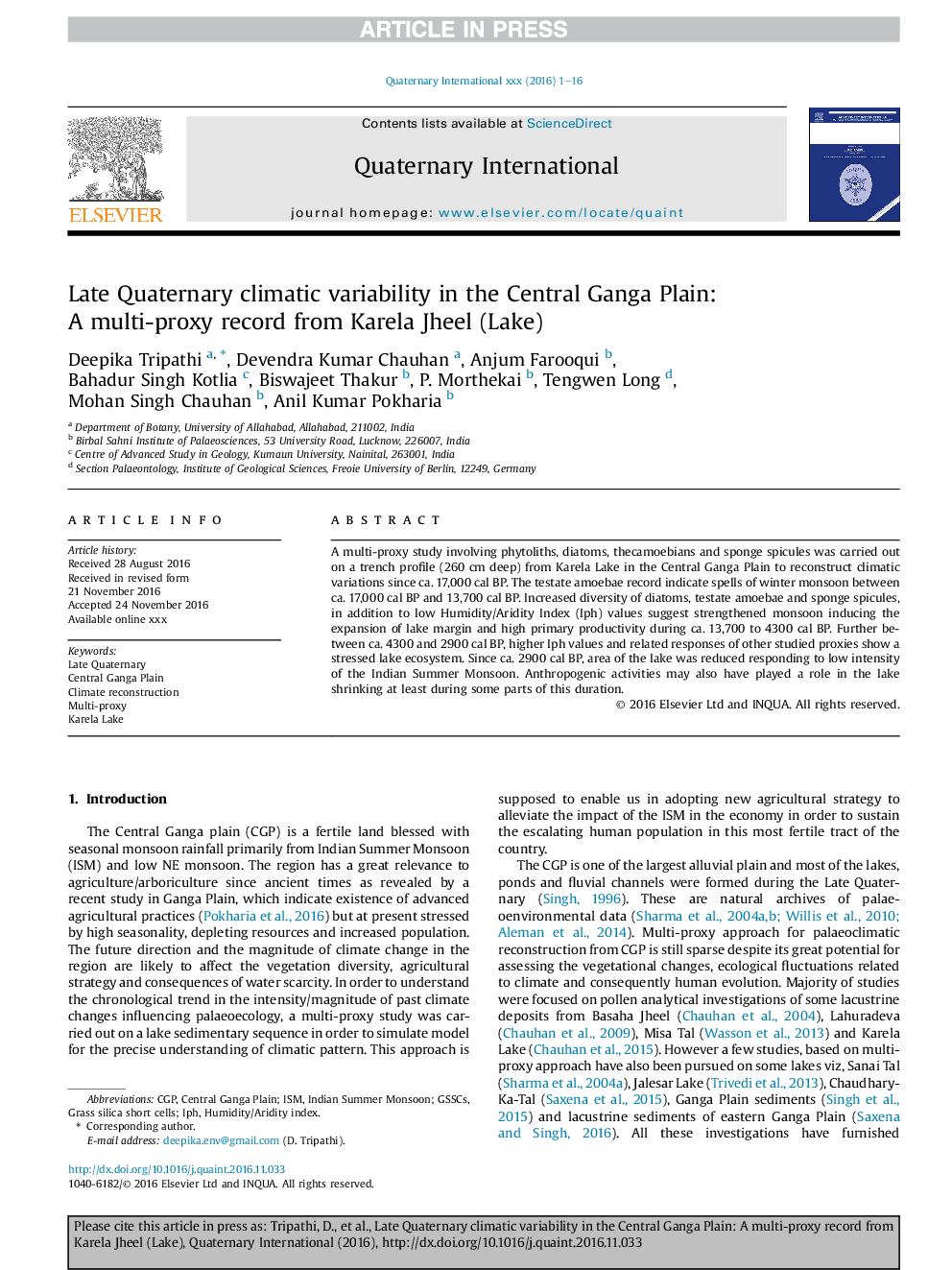| Article ID | Journal | Published Year | Pages | File Type |
|---|---|---|---|---|
| 5113128 | Quaternary International | 2017 | 16 Pages |
Abstract
A multi-proxy study involving phytoliths, diatoms, thecamoebians and sponge spicules was carried out on a trench profile (260Â cm deep) from Karela Lake in the Central Ganga Plain to reconstruct climatic variations since ca. 17,000Â cal BP. The testate amoebae record indicate spells of winter monsoon between ca. 17,000Â cal BP and 13,700Â cal BP. Increased diversity of diatoms, testate amoebae and sponge spicules, in addition to low Humidity/Aridity Index (Iph) values suggest strengthened monsoon inducing the expansion of lake margin and high primary productivity during ca. 13,700 to 4300Â cal BP. Further between ca. 4300 and 2900Â cal BP, higher Iph values and related responses of other studied proxies show a stressed lake ecosystem. Since ca. 2900Â cal BP, area of the lake was reduced responding to low intensity of the Indian Summer Monsoon. Anthropogenic activities may also have played a role in the lake shrinking at least during some parts of this duration.
Related Topics
Physical Sciences and Engineering
Earth and Planetary Sciences
Geology
Authors
Deepika Tripathi, Devendra Kumar Chauhan, Anjum Farooqui, Bahadur Singh Kotlia, Biswajeet Thakur, P. Morthekai, Tengwen Long, Mohan Singh Chauhan, Anil Kumar Pokharia,
